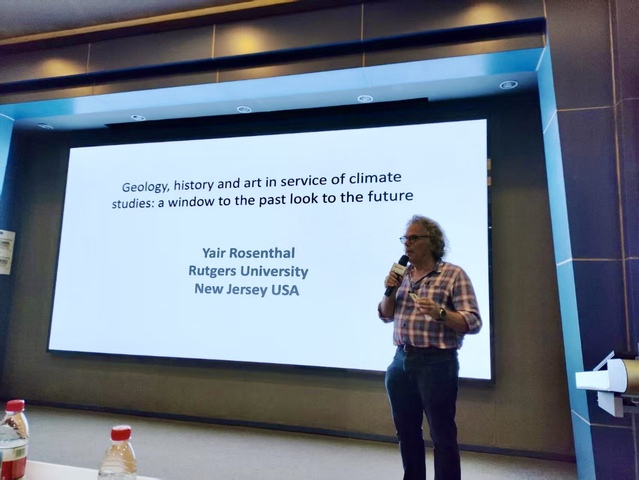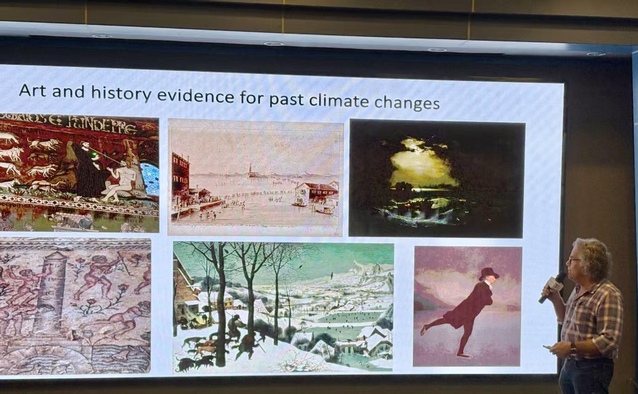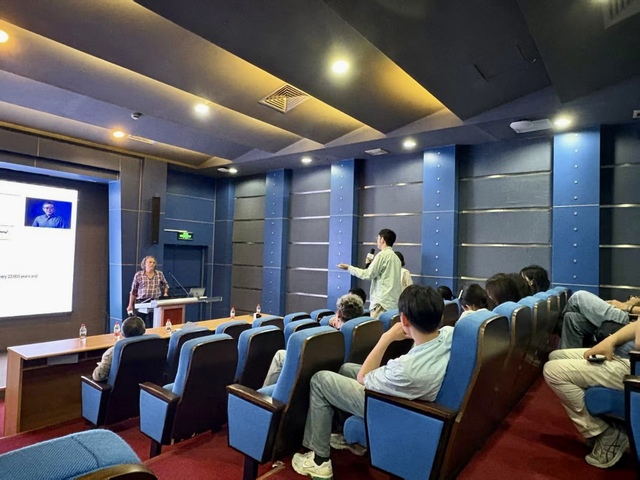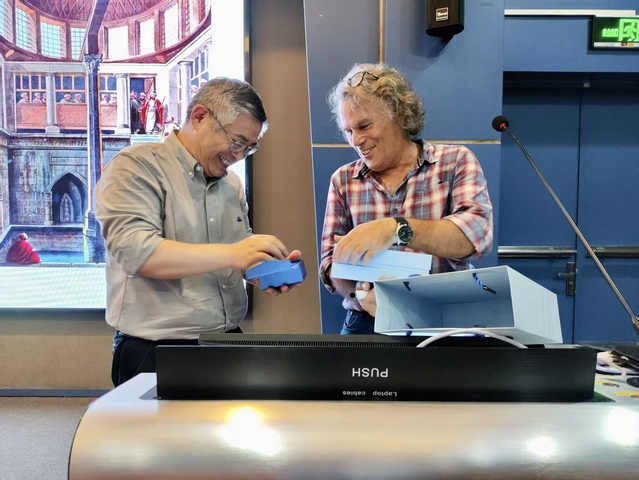Recently, Professor Yair Rosenthal, Distinguished Professor at Rutgers University, visited the School of Ocean and Earth Science at the invitation of Academician Zhimin Jian. Professor Rosenthal delivered the 58th Blue Ocean Feast lecture, entitled “Geology, History and Art in Service of Climate Studies: A Window to the Past, Look to the Future.” Held in the first-floor lecture hall of the Ocean Building, the event provided an inspiring and interdisciplinary academic experience for attending faculty, researchers, and students.
Professor Rosenthal holds joint appointments in the Department of Marine and Coastal Sciences and the Department of Earth and Planetary Sciences at Rutgers University. His research focuses primarily on climate variability throughout geological history. Over the past two decades, he has led or participated in more than ten oceanographic expeditions, including those under the International Ocean Discovery Program (IODP). Notably, he served as Co-Chief Scientist on Expeditions 363 and 379T and contributed to Expeditions 395 and 403. Through these voyages, several faculty members from our institute have established long-standing collaborations with Professor Rosenthal, leading to a number of high-impact publications. His team’s research has been published in top-tier journals such as Nature, Science, and PNAS, and has received widespread media attention for shedding geological light on the mechanisms driving global warming.

The lecture was structured into two parts: “Climate Clues in Art” and “Historical Records of Sea Level Change in Venice.” In the first part, Professor Rosenthal addressed the key question: How can we understand past climate conditions? He illustrated the diversity of methods used by paleo climatologists – ranging from indirect evidence in historical tax records (which reflect climate-driven changes in crop yields and taxation) to visual cues found in historical European paintings. For instance, some artworks depict darkened skies despite the presence of sunlight reflecting the global cooling following the 1815 Tambora volcanic eruption in Indonesia. This catastrophic event led to years of abnormally cold weather worldwide and influenced collective psychology, and contributed to the creation of gothic literary works such as Frankenstein and Dracula. The volcanic ash in the stratosphere, blocked sunlight and contributed to worldwide social and environmental disruption. Professor Rosenthal also demonstrated how thousands of years of Nile River water levels were preserved through artistic depictions, revealing a 7-year cycle, closely tied to latitudinal shifts in Mediterranean precipitation patterns.

The second part of the lecture focused on the Venice’s vulnerability to sea level fluctuations. As a city built on water, even small sea level changes have profound impacts. Algal lines on building foundations serve as markers of past sea levels. Artistic works, such as paintings of St. Mark’s Basilica submerged by floodwaters, also provide visual records of historical sea levels. The invention of the camera obscura in the 18th century enabled highly accurate depictions of urban landscapes, including staircase exposures during low water periods and elevated bridges above the canals. By 2002, the same steps were submerged, gondoliers could no longer pass under bridges while standing, and St. Mark’s Basilica had documented sea level peaks exceeding one meter—reaching adult chest height. These conditions led to the construction of the MOSE flood barrier system, retractable gates resting on the seabed that rise with injected air during high tides to block seawater intrusion. Professor Rosenthal also discussed other culturally and historically significant sites threatened by rising seas, including Herodium Port in Israel and Nan Madol in Micronesia. He emphasized that paleoclimatology is not limited to proxy records in sediment cores—it is deeply connected to human history, modern urban planning, and global strategies for climate resilience.

Following the lecture, Professor Rosenthal engaged in a lively discussion with faculty and students on climate change and interdisciplinary research. At the end, Academician Zhimin Jian presented him with a commemorative gift celebrating the 50th anniversary of the institute, in gratitude for his inspiring and thought-provoking presentation.


